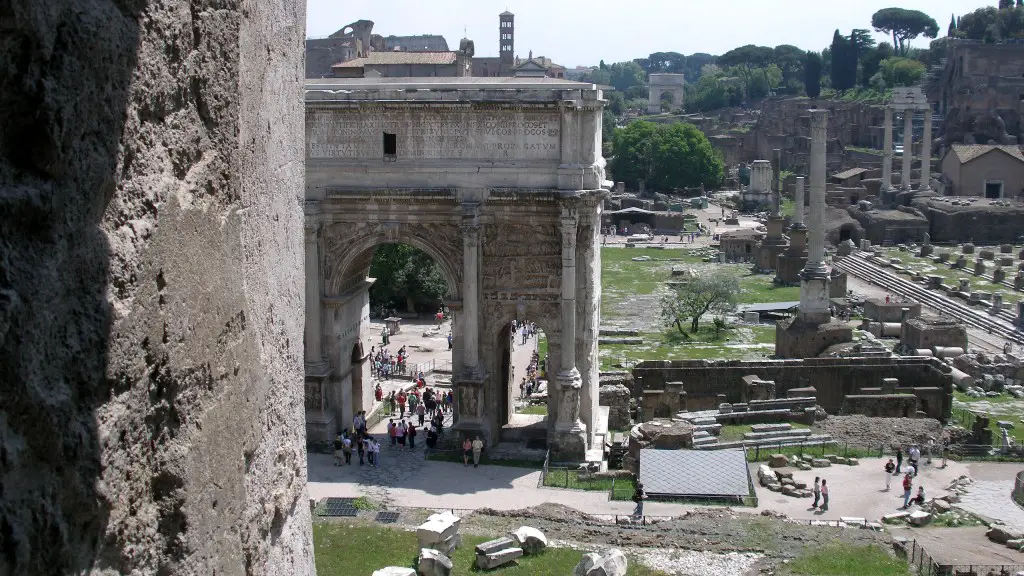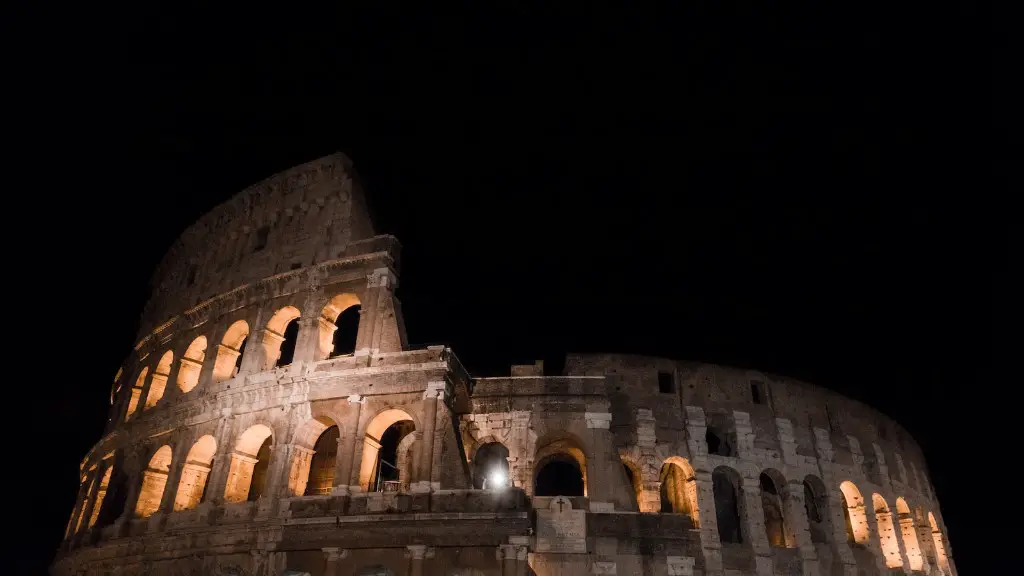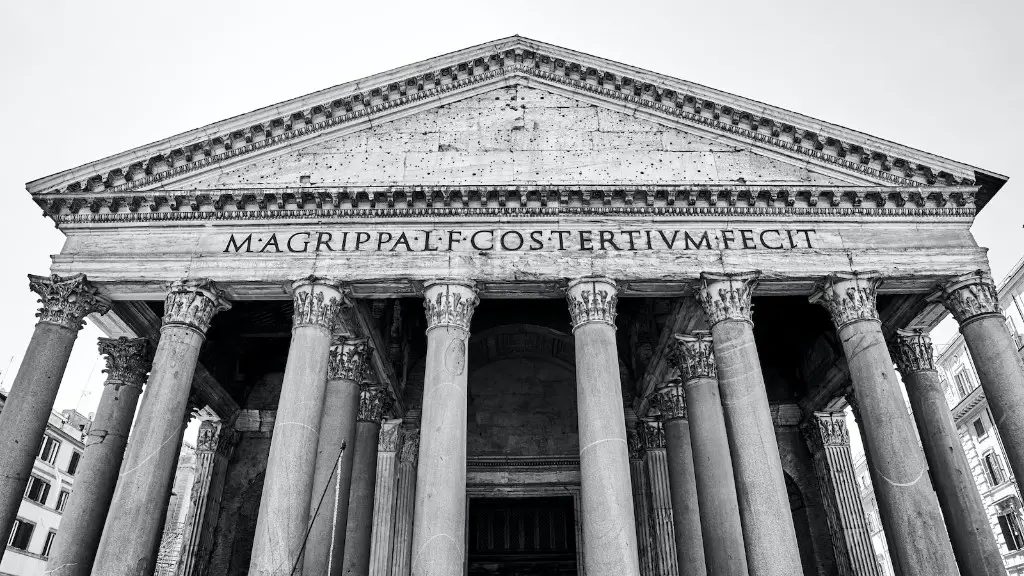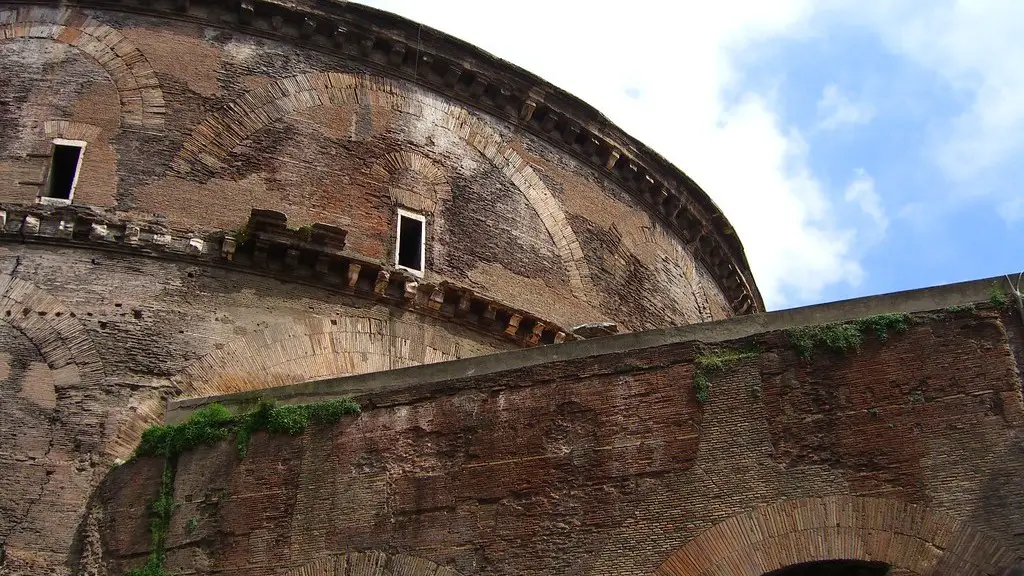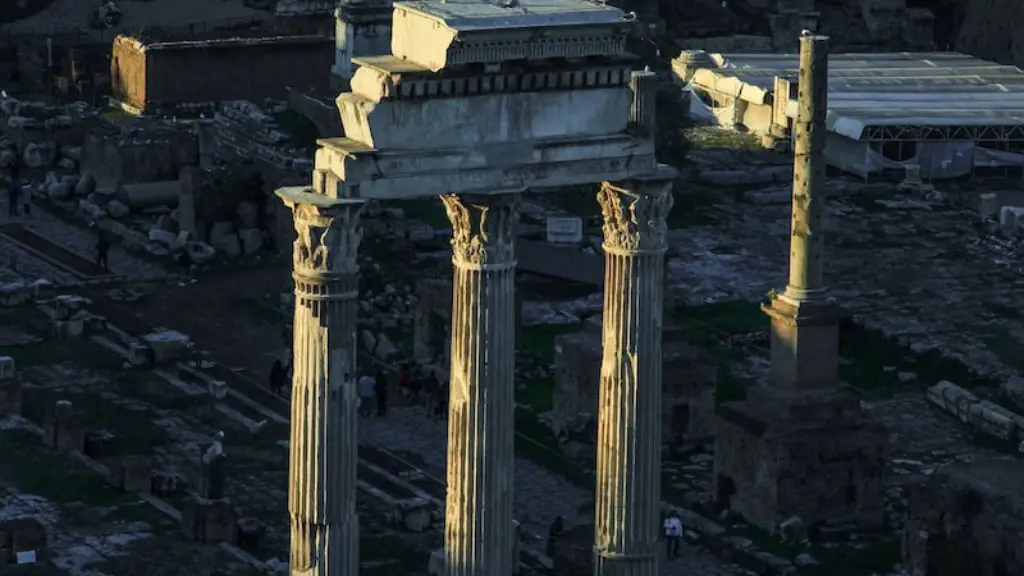The History of Travertine in Ancient Rome
The use of Travertine in Ancient Rome dates back centuries, and its use was evident in many of the city’s edifices, from the Pantheon to the Colosseum. Not only was it used for its aesthetic value, but its natural characteristics also made it an ideal stone for the construction of large building projects. In addition to its structural capacity, Travertine had the added benefit of being readily available in the region of Rome, making it a preferred choice for its various public monuments and works of engineering.
The building blocks of Travertine used in Ancient Rome were quarried near sites such as Tivoli and Testaccio, outside of Rome’s city walls. In its most basic form, Travertine had many of the same properties as marble, its more expensive and harder alternative, but was more permeable and softer. It could be broken down easily and its rough surfaces could be smoothed in order to look more like marble. For these reasons, Travertine was used for large-scale projects in Ancient Rome, such as the Colosseum, where its porous nature made it ideal for the construction of curved structures.
Ancient Roman architects also utilized Travertine’s permeability, learning how to install it in a number of intricate ways. For example, the Pantheon, a temple complex dedicated to the Roman gods, utilized its permeability to create a unique effect. The circular dome of the Pantheon was built entirely of Travertine, giving the structure its signature outward curvature. This outward curvature allowed water and light to enter the temple while maintaining the structural integrity of the building, creating a unique and unexpected result.
In addition to its structural benefits, Travertine was also used for purely decorative purposes. Because it was quite malleable and could be easily shaped and polished, the Ancient Romans used it to create intricate detailing in the form of friezes and columns. This in turn allowed them to create stunningly beautiful monuments and buildings, such as the Colosseum, which is adorned with Travertine friezes.
Due to its many characteristics and benefits, Travertine has been a preferred stone in the construction of both ancient and modern structures. Its durability and strength, and its aesthetic appeal, have endeared it to many, making it a trusted and popular material for architects, builders and designers. Its timeless beauty and ability to stand the test of time have made it an integral part of the architectural landscape of Ancient Rome.
Travertine’s Benefits to Construction
The Romans had a strong appreciation for Travertine’s benefits to construction, and this is especially evident in their use of the material in large-scale building projects. Travertine’s durability and strength make it an ideal stone for building, and its unique properties of malleability allow it to be formed into intricate shapes and designs. Ancient architects used this to their advantage, using Travertine’s multiple applications to create iconic architectural structures.
The Colosseum, for example, was built entirely of Travertine, and the material was used to great effect, with the use of its porous nature allowing for the construction of its curved walls. Not only was Travertine an integral part of the Colosseum’s structural integrity, its malleability allowed for the intricate detailing in the form of columns and friezes. These decorative elements were not only aesthetically pleasing, but were also integral to the building’s structural integrity.
The Pantheon’s immense dome was created using Travertine, providing the building with its unique outward curvature. This curved dome served to allow light and water to enter the temple while maintaining the integrity of the building. This use of Travertine’s unique properties allowed Ancient Roman architects to create a structure like no other, and its use in the construction of such an iconic building is a testament to its strength and durability.
Travertine’s many advantages in terms of construction make it a firm favorite in architecture, and its use in Ancient Rome was integral to many of the city’s iconic architectural works. It is for this reason that components of many of Rome’s ancient works can still be seen today, with modern day inhabitants enjoying its timeless beauty.
Travertine’s Impact on Architecture and Design
Travertine’s malleability and its signature outward curvature make it an ideal stone for designers and architects looking to create unique and captivating structures. In Ancient Rome, Travertine was integral to many works of architecture, both large and small-scale. Its inherent properties of texture, permability and strength made it an ideal choice for architects and designers, and its use in many of Rome’s iconic works, such as the Colosseum and the Pantheon, show evidence of its versatility and usefulness in design.
To this day, Travertine is still used in works of architecture and design, and its use has become an integral part of many contemporary works. Architects and designers, inspired by its use in Ancient Rome, have taken Travertine as a raw material and utilized its many benefits to create a variety of different structures, from palatial homes to luxury resorts. Travertine’s timeless beauty has allowed it to remain a favorite in design and architecture for centuries, inspiring designers and architects to new heights.
Its use in architecture and design has been met with much acclaim, with many of Travertine’s works, such as the Colosseum and the Pantheon, becoming iconic symbols of their respective cities. Travertine’s unique properties and its durable nature have allowed it to remain a key component in many of these works, often standing the test of time in ways that other materials are unable to.
From its use in Ancient Rome to its contemporary applications, Travertine has been an integral part of architecture and design for centuries. Its use has allowed architects and designers to create beautiful, timeless works of art that are renowned for their design, craftsmanship, and their ability to stand the test of time.
The Impact of Travertine on Ancient Roman Society
The impact of Travertine on Ancient Roman society was immense, with its use in many of the city’s iconic monuments and works of engineering providing the citizens with a sense of civic pride. Its use allowed citizens to identify with their city’s many achievements, and its timeless beauty endeared it to many. Additionally, the use of Travertine in large-scale public works confirmed the power and grandeur of the Roman Empire.
In addition to its ornamental aspects, Travertine’s many benefits to construction made it invaluable in the advancement of Ancient Roman engineering. Its malleable nature meant that it could be easily shaped and polished, allowing architects to create intricate detailing. This in turn allowed for structures like the Colosseum and the Pantheon to not only be stunning in their design but structurally sound as well.
The use of Travertine also had a great impact on the economy of Ancient Rome. As it was readily available in the area, it was an inexpensive stone to acquire, making it the preferred choice for many public works and monuments. This availability also allowed Travertine to become a preferred stone for private works as well, with many homes and villas constructed of the material.
The impact of Travertine on Ancient Roman society was immense, endearing it to many and providing the citizens with a sense of pride and a connection to the city’s many accomplishments. The use of Travertine in the city’s many iconic works of engineering and architecture confirmed the power and grandeur of the Roman Empire, and it is for this reason that many of these works can still be seen today, with the timeless beauty of the stone standing the test of time.
Preservation of Travertine in Ancient Rome
Although Travertine was a preferred stone in the construction of many monuments and buildings in Ancient Rome, the stone was not designed to last for centuries, and as a result, many of the city’s works had to be preserved and restored. Today, many of the city’s works of engineering, such as the Colosseum, remain preserved due to their meticulous restoration and conservation efforts.
Modern day craftsmen, using techniques that have been passed down through generations, have been able to restore and conserve Travertine, providing the city with many of its beloved structures for future generations to enjoy. This restoration process has been key to preserving many of Rome’s most iconic works, and the use ofTravertine’s unique properties and features have been essential in this effort.
To this day, the use of Travertine in Rome’s works of architecture has been instrumental in its preservation and restoration, providing craftsman with the right material to work with and allowing them to replicate the works of the Romans. Additionally, Travertine’s porous nature has allowed experts to replace large fragments of the stone, in order to maintain the integrity of the building.
The city of Rome is home to many stunning works of engineering and architecture, and much of this is due to the intricate restoration and conservation efforts that have gone into preserving works like the Colosseum and the Pantheon. The use of Travertine and its many characteristics have been invaluable in this effort, allowing for these ancient monuments to be preserved and enjoyed for generations to come.
Conclusion
The use of Travertine in Ancient Rome dates back centuries, and its use was integral to many of the city’s iconic works, from the Colosseum to the Pantheon. Its unique properties of texture, permability and strength made it an ideal material for the construction of large projects, and its ability to be shaped and polished gave architects and designers a great degree of control in their work. Additionally, its use in large-scale public works gave citizens a sense of civic pride and a connection to the city’s many accomplishments.
To this day, Travertine is still a preferred stone for architects and designers looking to create unique and captivating structures, and its use in Ancient Rome has been instrumental in inspiring many of today’s modern works. In addition to its beauty, Travertine’s durable nature has allowed it to stand the test of time, making it an integral part of the architectural landscape of Ancient Rome.
